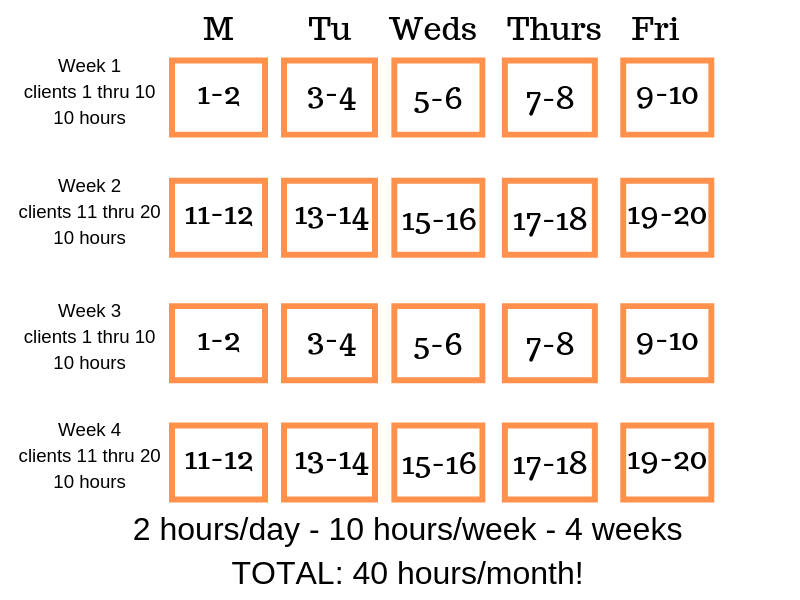The Basic Guide for Online Personal Training Prices
Determining your online personal training prices can be a challenge. It’s also one of the most important aspects for your success.
For instance, too low of a price and you don’t make any money. Pricing too high can mean no clients and also no money. Both can result in not being able to stay in business.
So you may ask: Is there a magic formula?”. The straight answer is no. But this blog can give you the knowledge and the 5 steps you need to establish pricing that will provide fair value to your clients and allow you to make a money making career.
Starting your online personal training business blog series
- How To Start Your Online Personal Training Business #1
- Personal Training Business Setup – First Steps #2
- Online Personal Trainer Management Tools – #3
- How To Make Your Personal Trainer Website #4
- How To Find Your Personals Trainer Niche #5
- Making Your Unique Selling Proposition for Fitness #6
- Online Personal Training Prices: How to Set Them #7 – Current blog
- How to Make Your Online Personal training package prices #8
- Making Personal Training Templates #9
- The Personal Training Business Opening #10 – End of Series
Don’t want to scroll? Click a section to go right to it.
Understanding the influences for pricing
Remember in the first blog you were told you need to learn some new things? Here are some of them.
Concept 1: Your prices will depend on a number of factors. Sometimes these factors stay the same and sometimes they change.
Concept 2: Online pricing doesn’t usually match brick and mortar/in person training rates.
See details below.

Pricing Influencers
- Changing factors include your skill, knowledge, reputation, costs, time investments, and even location.
- Online trainers are striving to get away from the “I am only worth what I can charge by the hour” model.
- Online customers typically expect lower pricing than one on one training.
- Geography does not play into pricing. In fact, you may have clients from different economic regions in the country, maybe even in other countries.
HOT TIP: Most new online trainers tend to undercharge. Don’t do it. Even if you are new at personal training, do not undervalue your worth.
It is easier to lower prices than it is to increase them!
Step 1 - Research online personal training prices
This step can take some time. Get on the internet and start searching for online personal trainer websites. Look at a variety of trainers to get the feel for their offerings. Then narrow down your search and find at least ten trainers that are working with the same niche group as you plan to work with.
Because it takes time, keep good notes and don’t rush things. Items to write down are the website, the types of services they provide, what they charge, what types of plans they offer and so on. It is also a good idea to see if you can determine their unique selling proposition.
Additionally, this important step will give you a lot of information which you can use later. Also you may see who some of your competitors are. And it will show you what your niche group can afford and is used to paying, especially if it is a trainer that has been in business for a few years.
Keep in mind, you are not out to match prices. This is just research. You will likely find a wide range of prices and service plans and get many great ideas for your own website. This link has great information a variety of market research tools.

Note: This blog is only pertaining to 100% online personal training prices. Therefore, if you are offering hybrid training, meaning some in person and some online, you may want to create different pricing structures since the two models are quite different.
Step 2 - Research your niche group
This step may also take some time depending on the niche group you are researching. For example, the busy business man in his 40s with a big family and many expenses may have less spending power than the single young dot com tech person in their late 20s. Take notes. Primary things you want to know are:
- How much spending power they have?
- What average income bracket are they in?
- Do they spend easily or do they need more convincing?
- Do they have any special needs or requirements that you may be able to demand higher rates for the service?
Remember, all these questions relate to more general observations than solid facts. And there will be variations in each niche group. This is just research for parts of a puzzle to be put together in the next steps.

Step 3 - Determine how many clients you can train per month
You need to know about how many online clients you can handle in a month. Secondly, knowing your capacity will allow you to make informed pricing choices.
Your number will depend on your experience, exercise template structure, which software you decide to use and other related factors. Time management and efficiency is also quite important. All these factors will be discussed in detail in a future blog about creating templates and scheduling advice.
Using the Total PT Fitness online system, it is quite easy to handle 20 clients a month, even for the novice online trainer. Of course, with experience, it is possible to train two to three times that many. See the extremely easy schedule offered here which only uses two hours per day! Yes, that’s right, only 40 hours per MONTH.

Sample client model: This basic schedule uses a fitness plan where each client is updated every two weeks. Pre-made fitness templates based on niche client can be modified for each client as needed. Time spent to update and communicate with client is one hour every two weeks. Total time spent per client is 2 hours/month. Only 10 hours/week.
Step 4 - Profit goal estimates for online personal training prices
Time to get out your calculator. Here are two methods for estimating basic pricing options. There are many many others. Searching the internet for profit/cost formulas will give you many more if you are so inclined. Most all get close to the same ranges. These two are fairly easy. Remember, ESTIMATES.
Resource/Goal method: This method starts with the amount of money in a certain time frame you want to make and the number of clients you can train in that time frame.
Example: Let’s say you want to make $48,000/year. That works out to $4000/month.
Next, you need to know how many clients you can train in one month. As you know, with Total PT Fitness, it is quite possible to train 20 clients over a months time.
Divide $4000/month by 20 clients = $200/month. That is what you would need to charge each client a month.

Cost/Profit method: This method takes your basic costs and how much you want to make to arrive at a monthly fee.
Example: Let’s say you want to make $48,000/year. That works out to $4000/month.
Next, you need to know your monthly costs. Lets go with $300/month. With Total PT Fitness, training 20 clients per month, the math works out as follows:
Add $4000/month plus $300/month = $4300. Divide that by 20 clients and you end up with $215.00. That is what you would need to charge each client a month to cover costs and make almost $50,000/year.

Reality Check
When you start you won’t have 20 clients, so you will need have a way to live and pay bills. Remember, in our blog on How to start your own personal training business, question 4, we made a point to mention you need to be prepared to invest money to get the business established. If your costs are $300/month and you have only two clients paying you $200/month, you need to be prepared to cover other costs like food, car payments, phone, etc. Later when you have more clients, the business can start paying you back.
Also, when figuring costs, we only included the minimums to run the business. The money you make is for car payments, food, clothes etc.
Above all, these methods are just different ways to get you thinking about price structures so you can make money and stay in business. You need to look at all your options and determine what will work best for your situation.
Professional Software for Personal Trainers and Wellness Professionals
Video exercise, fitness testing, nutrition counseling and phone app for clients
Step 5 - Choosing flat or recurring fee plans
A one time flat fee for a basic fitness plan may be able to attract more customers, especially those wary of ongoing fees. But there can be drawbacks to it. In other words, you may expend time and effort setting up the client and after a week or two they quit. Additionally, every time a client leaves, you will be spending time and marketing money to acquire a new client.
Recurring fees may scare away some clients wary of ongoing costs. On the other hand, those regular fees provide economic stability for your business. But, there is a lot to be said for needing to work harder to gain clients that provide ongoing income.
We advise to go for the recurring fee plans. They pay off over the long run.

Researching online personal training prices pays off
In conclusion, remember to take the time to research pricing models. Learn about your potential clients spending habits and needs. Examine different price structures. This aspect of your online training will affect your business every day. Take the time and do it right.
The methods shown are just ways to get you thinking about price structures so you can make money and stay in business. Of course, you need to look at all your options and determine what will work best for your situation. After that, you will be able to revise prices if needed as you gain more experience and clients.
Once you have all this data written down, it is time for How To Make Your Online Personal Training Package Prices, which is the next blog in this series.
Total PT Fitness Online – The Perfect Software for Handling Client Fitness Programs